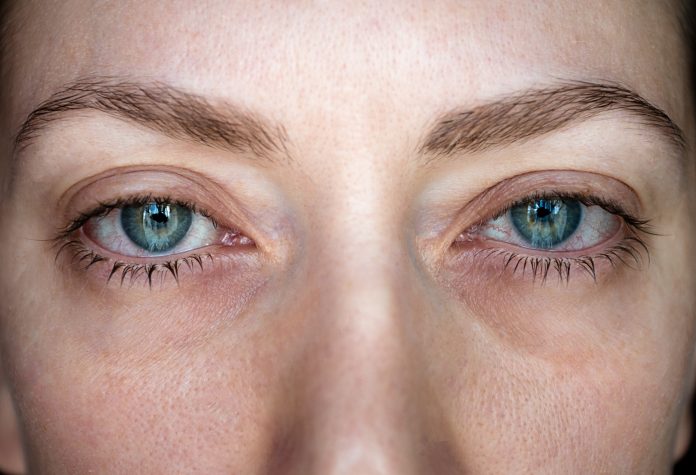With diabetes on the increase in the UK, Dr Louise Gow, Specialist Lead for Eye Health at The Royal National Institute of Blind People (RNIB) explains more about the condition and how it can affect the eyes
Sight loss is one of the many complications of uncontrolled diabetes. People with diabetes are known to be more at risk of developing eye conditions, such as cataracts, glaucoma, or retinal vessel occlusion. However, the most significant risk to vision in people with diabetes is diabetic retinopathy. This is when the blood vessels on the retina, at the back of the eye, can become blocked or leaky.
The highest risk factors for developing diabetic retinopathy are the length of time with the disease and poor control of the condition or blood pressure. Other risk factors are pregnant women with Type 1 diabetes and those with associated kidney disease, nephropathy.
The stages of diabetic retinopathy are background, pre-proliferative and proliferative retinopathy. Background changes do not usually affect sight but need to be monitored carefully to make sure the changes do not get worse. This stage is a weakening of retinal capillaries leading to the development of small areas of swellings in their walls, known as microaneurysms. A microaneurysm may leak blood (haemorrhage), as well as fluid (exudate). Pre-proliferative change is a progression of this where widespread changes are developing.
Proliferative diabetic retinopathy is diagnosed when these changes affect a large area of the retina and the blood supply to it is reduced. This is called ischaemia. The body tries to fix this by growing new retinal blood vessels. Unfortunately, these new vessels are weak and they haemorrhage very easily over the surface of the retina (damaging the retina) or into the vitreous gel obscuring the vision. If this progresses fibrous bands form in the vitreous that can pull on the retina causing the retina to detach and severe sight loss. In addition, new blood vessels can also grow at the iris, which can cause eye pressure to rise and lead to glaucoma.
Diabetic maculopathy occurs when the macula (central part of the retina) is affected by retinopathy. This means that central vision, which is required for seeing fine detail and colour, will be blurred. Fluid can build up at the macula called macular oedema. This causes vision to be blurred and distorted, as well as making colours appear washed out. The area can become ischaemic and the central vision lost.
Diabetic retinopathy may be treated with a focal laser for localised changes. This treats only small areas of the retina. When the disease is more advanced pan laser photocoagulation is used and treats a large area of the retina. Pan-retinal laser treatment itself can cause loss of peripheral vision but without treatment, the retinopathy will progress to cause a more serious loss of vision.
In advanced retinopathy surgery called vitrectomy where the vitreous gel from the eye is removed, may be required. This removes the fibrous bands to reduce the risk of detachment. Diabetic macular oedema can be treated with anti-VEGF injections.
It is thought that one in five people with severe sight loss will experience a condition called Charles Bonnet Syndrome (CBS). These are visual hallucinations, with no other sensory element. They take the form of simple patterns or lights but can also be detailed or elaborate images and can occur on a frequent or intermittent basis.
Often people who develop CBS think they are developing a mental health condition or dementia and are reluctant to seek help. This is further impacted by a lack of awareness of the condition by medical, allied and eye health professionals. This results in unnecessary distress for the patients. Raising awareness in these professions would result in better patient care.
There is no medical cure for CBS but knowing CBS usually improves with time and having information on it, as well as sharing experiences with friends or family can also help. There are some management techniques that can be helpful, such as changing the light, reaching out to touch the image or staring straight at it to make the hallucination disappear.
Although it was once the leading cause of sight loss in the working age population, incidents of diabetic retinopathy are now declining due to earlier intervention, diabetic retinal screening and new treatment options.
Sight loss from diabetic retinopathy can be significantly reduced if identified and treated early. As symptoms are not present in the early stages it is very important that anyone with diabetes has regular eye examinations and attends their retinal screening appointments. The UK is one of few countries to offer routine eye screening for diabetic eye disease free of charge. All diabetics over the age of 12 are offered this service if they are not under the care of a hospital eye clinic. The screening ensures patients are informed of the early signs meaning they can make necessary changes to how they control their diabetes.
However, as people can choose to opt out of the screening process the challenge is to try to educate those who are high risk or encourage those who are in hard to reach groups to attend their appointments. It is critical that people with diabetes are supported to manage their eye condition, as well as their diabetes.
With rising levels of diabetes, how the NHS manages capacity to ensure people can access eye screening and treatment when they need it is under increasing scrutiny. People with diabetes are currently called to have an eye examination every 12 months, but this is likely to be widened to two years in patients who have no sign of retinopathy or are at low risk.
It is hoped that new technologies, such as Optical Coherence Tomographers (OCT) will soon be introduced for eye screening programmes. These machines enable a non-invasive high-resolution view of the layers of the posterior pole of the eye and optic nerve head.
They can potentially allow even earlier detection of retinal and macular changes. For more information on eye health visit www.rnib.org.uk
Dr Louise Gow
Specialist Lead for Eye Health
The Royal National Institute of Blind People (RNIB)
www.rnib.org.uk
https://twitter.com/rnib












The number of people now being diagnosed in the UK with diabetes is staggering., so it is no surprise that complications of the condition are prevalent. Great article.